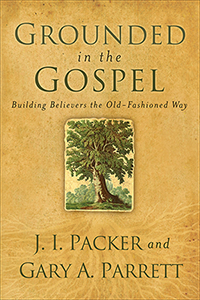
Occasionally, we like to put the Antioch School in the context of the larger landscape. The 2014 Survey of Online Learning gives us such an opportunity. Here are some comments about the Antioch School in light of 11 key findings about online college students in the recent work by the Babsen Survey Research Group and the Online Learning Consortium.
1. Online students are enrolling at institutions further away from their residence.
A slight majority of undergraduates report enrolling in a campus or center within 100 miles of where they live but less than half of graduate students do the same. Three-year trends show students are increasingly willing to attend an institution farther from home. (In 2012, 80% reported attending an institution within 100 miles of where they lived. This declined to 69% in 2013 and 54% in 2014.)
 The Antioch School certainly fits this finding. Only a small percentage of our students live within 100 miles of our headquarters. For most of our students, it is the location of their own churches that is important, not the location of the Antioch School.
The Antioch School certainly fits this finding. Only a small percentage of our students live within 100 miles of our headquarters. For most of our students, it is the location of their own churches that is important, not the location of the Antioch School.
2. Although cost and financial aid are important to online students, these are not deciding factors in their selection of an online program.
Although cost remained a top selection factor and the most-often-asked question of enrollment advisors, students demonstrated that they are balancing quality and cost. Sixty-six percent of undergraduate online students and 79% of graduate online students who had already enrolled report that they did not select the least expensive program available. Financial aid was critical for about half of those surveyed, yet only 20% say they would not attend an institution if their financial aid needs had not been met.
 The low cost of tuition in the Antioch School is an important factor for most Antioch School students because many would not be pursuing a degree if they didn’t think it was affordable. Although the Antioch School does not offer federal financial aid, many students still do rely on the financial support of their churches or ministry organizations.
The low cost of tuition in the Antioch School is an important factor for most Antioch School students because many would not be pursuing a degree if they didn’t think it was affordable. Although the Antioch School does not offer federal financial aid, many students still do rely on the financial support of their churches or ministry organizations.
3. Online students are looking to improve their employment situation and are satisfied with their investment in an online degree.
A large majority of students pursuing online degrees and certificates are doing so for employment-related reasons. They want full-time jobs, new jobs, better jobs, or need more training for their current jobs. Within a year of graduation, about 40% report improvement in their employment status, typically a raise or promotion. About 60% of undergraduates and 70% of graduate students report being completely satisfied with their investment of time and money.
 Currently, most students enrolled in the Antioch School who are looking for employment related to their academic programs are doing so in vocational ministry fields. However, most don’t see the connection between Antioch School programs and other vocational fields. Yet, there is vast potential for using the Ministry Practicum (and additional practicum in the free elective category) to help students vocationally in fields for which there are connections in their churches.
Currently, most students enrolled in the Antioch School who are looking for employment related to their academic programs are doing so in vocational ministry fields. However, most don’t see the connection between Antioch School programs and other vocational fields. Yet, there is vast potential for using the Ministry Practicum (and additional practicum in the free elective category) to help students vocationally in fields for which there are connections in their churches.
4. High job placement rate is the most appealing marketing message.
Given a choice of 18 different marketing messages, the overwhelming favorite was “90% job placement.” Three messages were runners-ups: “Earn your degree in one year,” “study at your own pace,” and “free textbooks.”
 The Antioch School doesn’t market its high placement rate. However, most of our students are already “placed” and being trained for ministry where they already are . . . as well as for the church planting efforts of their churches.
The Antioch School doesn’t market its high placement rate. However, most of our students are already “placed” and being trained for ministry where they already are . . . as well as for the church planting efforts of their churches.
5. Although many universities prefer to price by credit hour, most students prefer to think of the total degree cost. In general, students appear to be confused about the price they pay.
Most students, both undergraduate and graduate, prefer to think about cost in terms of the entire degree with per course pricing their second choice at 33%. Per credit is the least favored way to think about price.
 The Antioch School is ahead of this trend because our program enrollment has tuition tied to programs and monthly payments rather than tuition tied to credit hours.
The Antioch School is ahead of this trend because our program enrollment has tuition tied to programs and monthly payments rather than tuition tied to credit hours.
6. About 80% of online undergraduates have earned credit elsewhere and transfer credit is important to them.
As in 2013, a large majority of online undergraduate students bring credits with them. About half report having “most” or “all” of their transfer credits accepted. Almost 80% report it is very important that they can easily find information about transfer credits, have their questions answered quickly, and receive prompt decisions about transfer credit from institutions of interest.
 It is also true that most Antioch School undergraduate students utilize transfer credit for General Education and/or Free Electives.
It is also true that most Antioch School undergraduate students utilize transfer credit for General Education and/or Free Electives.
7. Business continues to be the most common field of study.
Business and related fields continue to enroll the most online students with more than 25% of the total. Professional fields such as IT, criminal justice, and nursing are also popular. Although there are a handful of disciplines that attract large enrollments, students report more than 140 different fields or specializations of interest. Within the business discipline, for example, undergraduate students select a wide variety of specializations with accounting, business communications, and business administration being the most popular, while graduate business students are more likely to specialize in a functional area such as accounting, marketing, IT and leadership.
 Although the Antioch School does not offer degree programs in “business” and some of these other popular fields, it is important for churches to include in their Antioch School program students who are pursuing other fields so that they have a well-trained team of elders and benefactors, as well as ministers of the Gospel. Students can use Antioch School credit to transfer into other programs of other institutions, as well as bring the other fields inside Antioch School programs through the Practicum and Free Electives.
Although the Antioch School does not offer degree programs in “business” and some of these other popular fields, it is important for churches to include in their Antioch School program students who are pursuing other fields so that they have a well-trained team of elders and benefactors, as well as ministers of the Gospel. Students can use Antioch School credit to transfer into other programs of other institutions, as well as bring the other fields inside Antioch School programs through the Practicum and Free Electives.
8. Reputation and price continue to be key selection criteria.
Although a number of factors influence the choice of a college, reputation and price continue to be most important. The primary driver of reputation is accreditation followed by recognition, rankings, and recommendations.
 The Antioch School’s accreditation is certainly valuable, but it seems that most students enroll in our programs because of the reputation and commendation of the churches and church networks that partner with us.
The Antioch School’s accreditation is certainly valuable, but it seems that most students enroll in our programs because of the reputation and commendation of the churches and church networks that partner with us.
9. Some students have a clear preference for online study.
Almost 90% of online students surveyed report that online study was equal to or better than classroom study. About one-third report they were not likely to have considered classroom or hybrid programs. Among those who started on campus but didn’t complete their degree in that format, most report issues such as personal events, a new job or relocation as the reason.
 Antioch School students don’t necessarily prefer online study. They enroll because of a clear preference for studying in their churches. We leverage the use of online e-Portfolio assessment in order to provide opportunities to study in churches.
Antioch School students don’t necessarily prefer online study. They enroll because of a clear preference for studying in their churches. We leverage the use of online e-Portfolio assessment in order to provide opportunities to study in churches.
10. A higher percentage of online students are unemployed.
The number of individuals working full time declined from 60% in 2012 to 55% in 2013 and 46% in 2014. The number working part time has been constant, while the number of those who are unemployed rose from 16% to 24% to 30% over the past three consecutive studies.
 We don’t know how many Antioch School students are unemployed. However, we know that nearly all Antioch School students are fully engaged in ministry in their churches.
We don’t know how many Antioch School students are unemployed. However, we know that nearly all Antioch School students are fully engaged in ministry in their churches.
11. A higher percentage of online students rely only on financial aid to pay for school.
Since 2012, there has been an increasing trend of students paying for school with “student loans and other financial aid only,” selected by 31% of respondents in 2012, 37% in 2013 and 40% in 2014.
 The Antioch School doesn’t make federal financial aid available to our students, so they don’t rely on it at all. However, they often rely heavily on the much lower tuition of the Antioch School.
The Antioch School doesn’t make federal financial aid available to our students, so they don’t rely on it at all. However, they often rely heavily on the much lower tuition of the Antioch School.



 The Antioch School certainly fits this finding. Only a small percentage of our students live within 100 miles of our headquarters. For most of our students, it is the location of their own churches that is important, not the location of the Antioch School.
The Antioch School certainly fits this finding. Only a small percentage of our students live within 100 miles of our headquarters. For most of our students, it is the location of their own churches that is important, not the location of the Antioch School. When a book is loaded with some of my favorite BILD terms (such as kerygma, didache, catachesis), it really gets my attention. Consider this great quote from
When a book is loaded with some of my favorite BILD terms (such as kerygma, didache, catachesis), it really gets my attention. Consider this great quote from  Formal models of theological education are characterized by the schooling paradigm, whereas nonformal models are not. Rather, nonformal models of theological are characterized by intentional learning in real-life contexts. The differences can be seen through descriptions related to the following categories.
Formal models of theological education are characterized by the schooling paradigm, whereas nonformal models are not. Rather, nonformal models of theological are characterized by intentional learning in real-life contexts. The differences can be seen through descriptions related to the following categories.
 We have been singing the praises of competency-based education for years and predicting that it would bring significant change to the higher education world. Well, it is starting to happen. The Wall Street Journal reported on January 24, 2013 that the University of Wisconsin is now offering “a program that promises to award a bachelor’s degree based on knowledge” regardless of the source or method of learning.
We have been singing the praises of competency-based education for years and predicting that it would bring significant change to the higher education world. Well, it is starting to happen. The Wall Street Journal reported on January 24, 2013 that the University of Wisconsin is now offering “a program that promises to award a bachelor’s degree based on knowledge” regardless of the source or method of learning.